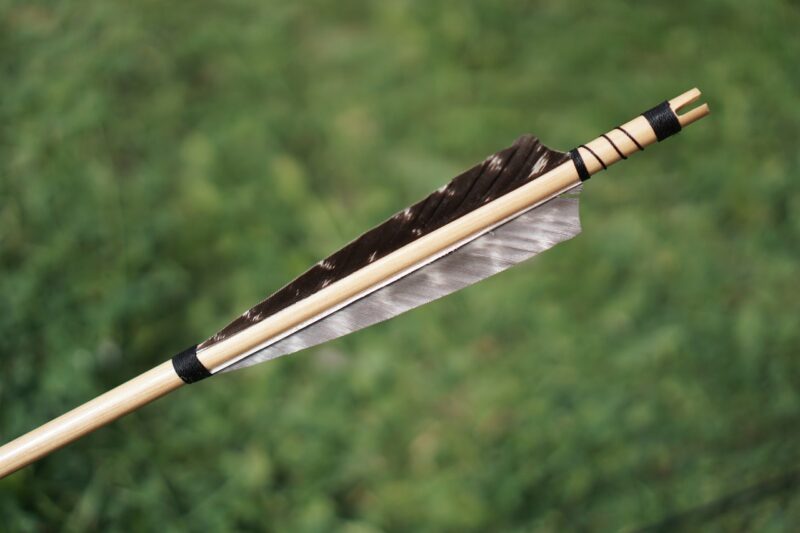The Physics of Arrows and Why Certain Designs Are Better for Speed and Accuracy
November 12, 2024

When it comes to archery, the performance of arrows is dictated by a mix of physics, materials, and design. Understanding how these elements interact can help archers choose the best equipment for speed, accuracy, and overall success in their shooting endeavors. In this article, we will explore the physical principles behind arrow dynamics, the impact of different designs on performance, and why some arrows are better suited for specific purposes than others.
1. The Basics of Arrow Dynamics
To appreciate the nuances of arrow design, we need to start with the fundamental forces that come into play when an arrow is fired. The flight of an arrow can be analyzed through several key principles:
- Gravity: As with any projectile, gravity acts upon the arrow, pulling it down towards the ground as it travels through the air.
- Aerodynamics: The shape and design of the arrow affect how air flows around it, which influences lift, drag, and stability during flight.
- Inertia: Once an arrow is in motion, it will continue to move at a constant velocity unless acted upon by an outside force (Newton’s First Law).
Understanding these forces helps archers make educated decisions about their equipment.
2. The Components of an Arrow
Arrows are made up of several key components:
- Fletchings: The feathers or vanes attached to the tail of the arrow help stabilize its flight, reducing spin and helping maintain a straight path.
- Shaft: The body of the arrow comes in varying lengths and materials (typically carbon, aluminum, or wood) and plays a critical role in determining the arrow’s speed and trajectory.
- Tip: The type of tip (broadhead, field point, etc.) affects the arrow’s performance upon impact. Different tips serve specific purposes and will affect flight dynamics differently.
Each component can significantly modify how well an arrow performs in terms of speed and accuracy.
3. The Science of Arrow Speed
Speed is vital in archery because a faster arrow generally means flatter trajectories and less time for environmental factors (like wind) to influence its path. Several factors impact arrow speed:
- Weight: Heavier arrows may offer better energy transfer but at the cost of speed. A balance must be struck between the weight and speed for optimal results.
- Length: Longer arrows may be less stable in flight, while shorter arrows can suffer from reduced energy retention.
- Material: The choice of shaft material greatly influences both the weight and speed of arrows. Carbon arrows are typically lighter and faster compared to their aluminum counterparts.
When selecting arrows, archers must consider these factors carefully. The goal is usually to achieve maximum speed while still maintaining accuracy.
4. Understanding Arrow Accuracy
While speed is an essential component, accuracy often wins when it comes to hitting the target. Accuracy can be influenced by several aspects:
- Fletching Configuration: The number and type of fletchings affect the arrow’s stabilization. Three or vanes can help the arrow achieve a steady flight pattern.
- Arrow Spine: The arrow’s stiffness (or spine) directly impacts how much it bends during the shot. An improperly spined arrow can result in poor flight behavior, leading to inaccuracy.
- Release Technique: The way an archer releases the arrow also plays a significant role. Consistency in release improves accuracy regardless of the equipment used.
Combining a well-designed arrow with solid shooting techniques yields the best results.
5. Different Designs for Different Needs
Different archery disciplines—such as target shooting, hunting, and field archery—demand specific arrow designs. Here’s a brief overview:
- Target Arrows: Typically lighter with smaller tips for aerodynamic efficiency and minimal drag. They often feature slender shafts for maximum speed and longer ranges.
- Hunting Arrows: Heavier tips to maximize penetration and accuracy at shorter distances. These arrows are designed to withstand the impact of hitting a game animal.
- Field Arrows: Often some hybrid of target and hunting arrows, these can be used in various conditions and typically feature durable serrated tips for a variety of practice scenarios.
Choosing the right design based on your specific requirements will enhance your overall shooting experience.
6. Conclusion: Finding Your Ideal Arrow
The physics of arrows fundamentally guides their performance and can greatly influence both speed and accuracy. Understanding how design choices play into these physical principles allows archers to make informed decisions tailored to their specific needs.
Whether you’re a competitive archer looking to break records or a hunter aiming to improve your results, the right arrows can make a significant difference in your performance. Remember, striking a balance between speed and accuracy will enhance your archery experience and ultimately lead to improved shooting results.
With a solid knowledge of arrow dynamics, you’ll be better equipped to choose the arrows that best serve your archery goals, reinforcing the old adage that success in archery is as much about knowledge as it is about practice.








